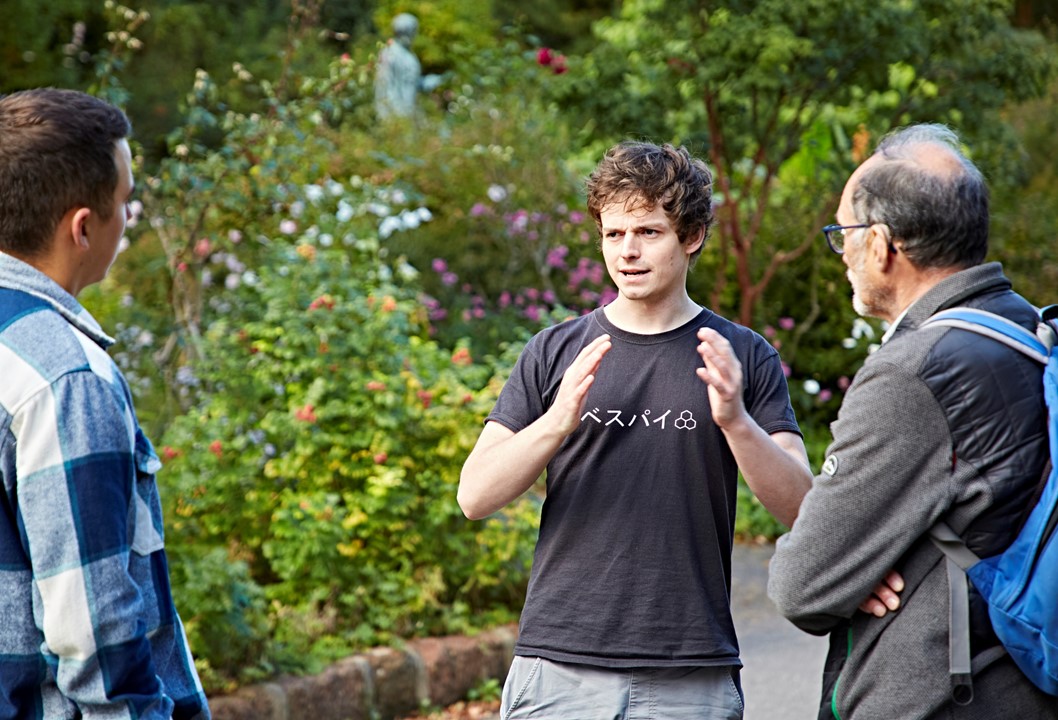In this interview, Catherine Hurcombe speaks to Dr Thomas O’Shea Wheller from the Department of Ecology and Conservation about the role public engagement plays in his research on the behaviours of social insects, ranging from invasive hornet activities to working with the beekeeping industry.
CH: Would you like to start by introducing yourself?
TOW: My name is Thomas O’Shea-Wheller and I’m a research fellow at the University of Exeter. I primarily work with social insects, including applied work with pollinators, investigations of complex behavioural interactions, and using artificial intelligence to track activity.
CH: Focussing on the natural world doesn’t necessarily require that public element, so what made you decide to include community voices?
TOW: I think mostly because it’s fun! You spend ages crouched over computers, typing stuff into papers that not as many people will read. I thought it’d be nice to directly convey that research to the public. It’s rewarding to see people genuinely interested in something you’ve done.
CH: I think doing it because it’s fun is a great answer! That sums it up really.
On the flip side of that, how does bringing in those public audiences influence your research, as well as teaching them about the topic?
TOW: It’s very distinct depending on what part of the research it is. A really good example is the engagement work I do with beekeepers.
Often what I do to help inform where it’s worth focussing my research effort is to go to beekeepers and say, “here’s some ideas, which of these are ridiculous?”. If we’re doing applied research, it needs to deliver an applied outcome, and the selection of that outcome should be based on what delivers the most benefit to beekeepers.
CH: Does the fact you’ve got such a specific industry to focus on make it easier to target your engagement? Since you already know who is likely to benefit from this research?
TOW: In honeybee research, that’s absolutely the case. That’s probably the most human-centric area of my research.
A lot of the work I do is with invasive hornets, and people love hearing about those. They’re having more of a negative reaction, but it’s about seeing what people think, and trying to involve people in behaviours that support, rather than go against, the aims of our research. People’s reaction when they think they’ve seen an invasive hornet is usually to try and kill it. But the only way to take them out is to destroy the nest and get the queen – so killing it is helping the hornets because it stops us from finding the nest.
It’s giving even that quick overview to people in the hope that they change their behaviour. That can be a positive benefit towards the wider goal of the researcher that still protects wildlife from invasive species.
CH: You’re not necessarily getting rid of those negative opinions, but trying to balance them with a more nuanced understanding.
What do you think is the most important part when you’re working with non-specialist audiences, covering very technical information?
TOW: There’s the classic dichotomy of needing to make it as simple as possible while still having all the correct information. I try to encourage people to ask questions, because if something’s unclear to them, there’s probably a bunch of people who don’t know what I’m talking about.
I really enjoy speaking to audiences outside of my area. I like it when people come up with properly out-of-the blue questions, so I think, oh, I never thought of that!
CH: What would your advice be to anyone who’s undertaking public engagement for the first time, particularly someone who’s focusing on places or species that are a bit more distant from general public experience?
TOW: I think I wrote a blog post on this back when I was a PhD student! When I think about an obscure ant behaviour, or wasps or hornets, which people might not be interested in – or even have a negative reaction to – there are things you can do.
One is taking something that people are very familiar with as a similar example. If people can emotionally engage in the topic, even just through having something that they can relate to, I think that makes a massive difference. The worst thing you can do is try and be preachy to people.
A few members of the public wanted to come and see one of our systems where hornets were coming and going. I know that they won’t sting, unless you do certain aggressive things, so I was feeding the hornets from my hand. And at the beginning, everyone was freaking out. After about 10 minutes though, they were all relaxed.
This is people having not just negative reactions but fear – you’re taking them into a situation where they genuinely think they’re going to be hurt, and then changing that assumption by demonstrating that if you follow some simple rules, you don’t need to worry.
I want to go into that situation so they can watch. It’s the ultimate case of putting your skin in the game!
CH: And it acknowledges that people have this fear and working with that, rather than just trying to shut it down and pretend it doesn’t exist.
TOW: This is one of the few areas where you can say, OK, we genuinely changed a few people’s opinions; we were able to do that effectively. To me, that feels like more impact than I have in the rest of these areas!
Photography credit: Ben Knight

